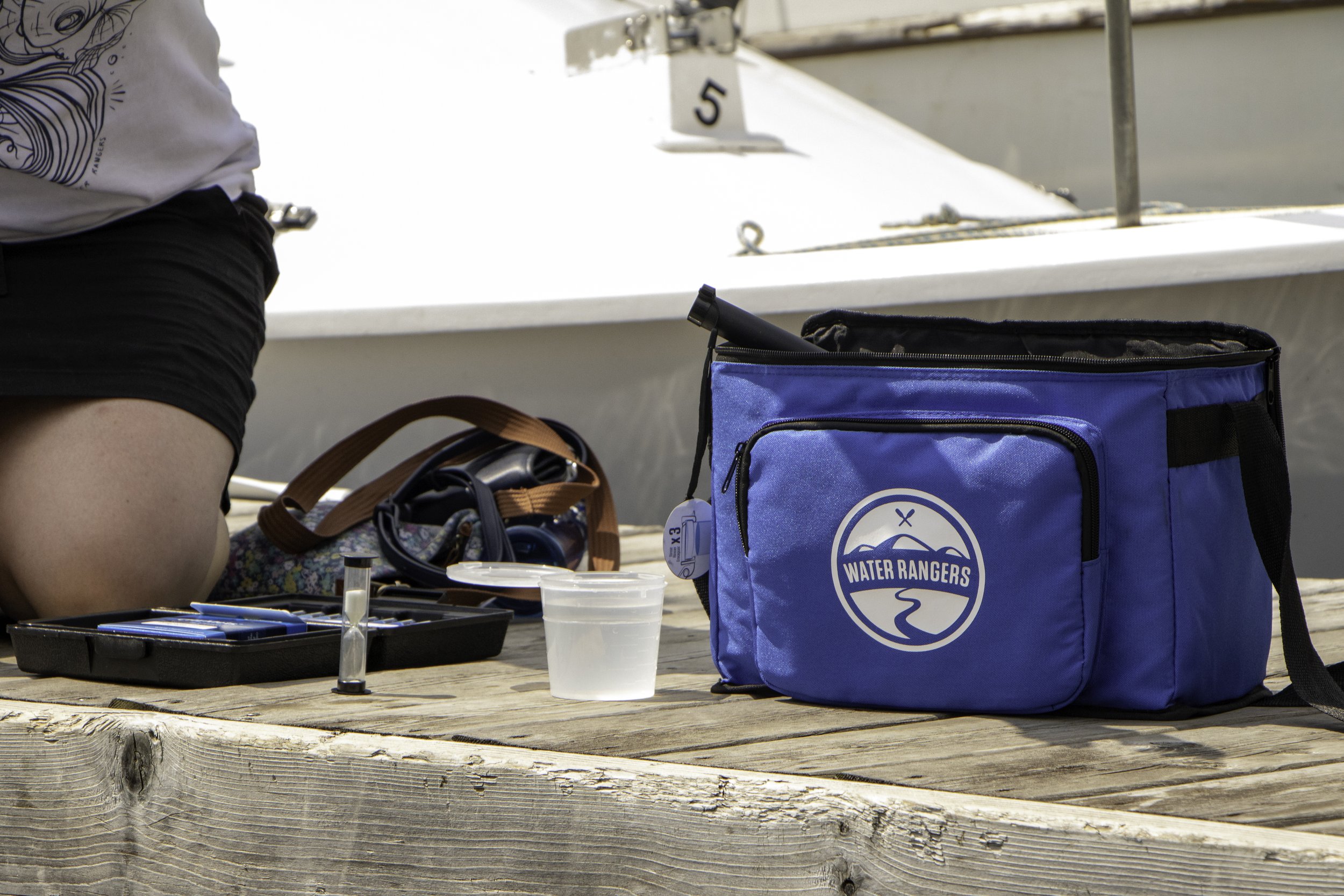
The Kingston Hub Procedures and Sources
Water Quality Guidelines
The Kingston Hub follows the standards set by Ontario’s 2018 Provincial Water Quality Objectives established by the Ministry of the Environment, Conservation and Parks. The standard states that a sites fails to meet recreational water quality guidelines if the geometric mean (minimum of 5 samples) exceeds ≤ 200 E. coli/100 mL of water OR if a single sample exceeds ≤ 400 E. coli/100 mL of water.
Field Protocol
During field visits, staff and community scientists take a minimum of five samples at each location. The samples are taken in accordance with permissive procedures outlined in Swim Drink Fish’s Standard Operating Procedures. Water Ranger’s Data is also collected at one location per sampling site each time we sample. Staff and volunteer community scientists also adhere to Tecta’s procedures and to Health Canada’s Guidelines for Canadian Recreational Water Quality, Third Edition (2012).
Analysis in the Lab
At the lab, the samples are processed in accordance with procedures developed for the Tecta B-16 model. This is an automated microbiological system that provides E.coli and Total Coliform results in 2-18 hours.
Samples are processed by adding 100 ml of sample water into the Tecta Cartridge’s that already contain a reagent. Once the reagent is fully dissolved the Cartridge’s are placed into the Tecta machine and analysis is run. Results will automatically be sent via email.
Where we Share our Results
FAQs
-
Swim Drink Fish collects at least 5 samples at every site, every time we monitor. We collect samples from the same location every time, following the protocols in government guidelines.
-
Just like the weather, water quality changes daily. Swim Drink Fish community monitoring hub staff test water in the same locations at least 1-2 times a week so that the results are as up-to-date as possible. Many local governments also monitor weekly.
-
Water quality changes all the time. Water that meets government guidelines one day may fail the next day. This does not mean that the old results were wrong. It just means that conditions changed.
-
Government guidelines for water quality are all based on risk assessments. Health Canada estimates that there will be 10-20 illnesses for every 1,000 people who swim in waters that meet government guidelines. That rate of 1-2% is considered an acceptable level of risk by government officials. Once bacteria levels exceed government guidelines, the risk of contracting an illness increases.
-
There are two ways that samples can "fail” to meet government guidelines. If any single sample of 100 ml of water has 400 E. coli or more, it fails to meet government guidelines; If the geometric mean of at least 5 samples collected from a recreational water area in a 30-day period has 200 E. coli or more per 100 ml of water, the site fails to meet government guidelines. This guideline comes from the Operational Approaches for Recreational
Recreational Water Guideline, 2018, issued by the Ministry of Health and Long Term Care in Ontario. It is based on the federal Canadian Recreational Water Quality Guidelines.







